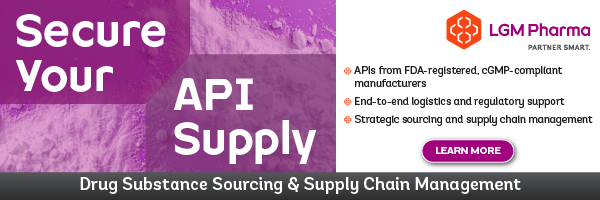 When the supply of 0.9% sodium chloride faltered, it exposed an uncomfortable truth: the fragility of global pharmaceutical supply chains lies not only in rare biologics or high-tech therapies, but in the cheapest, most basic medicines.
When the supply of 0.9% sodium chloride faltered, it exposed an uncomfortable truth: the fragility of global pharmaceutical supply chains lies not only in rare biologics or high-tech therapies, but in the cheapest, most basic medicines.
For hospitals, saline is the definition of essential, used to hydrate patients, flush IV lines, and keep operating theatres moving. When Baxter’s main US plant went offline in 2024, the American Medical Association warned that a facility producing 1.5 million bags a day being knocked out amounted to “massive supply disruptions.”1 That disruption cascaded across Europe and Asia as US buyers scrambled to secure stock.
The shortage highlighted a paradox: the very products treated as commodities are the ones healthcare cannot live without. And it revealed a structural weakness in the way the industry values and undervalues supply chain resilience.
Turning a commodity into strategy
Grifols was one of the few companies to step decisively into the gap. Its leadership made a deliberate choice to treat saline as a strategic product rather than a low-margin filler. That shift in mindset is significant. Analysts at Frost & Sullivan have argued that resilience is emerging as a differentiator in healthcare supply chains, with nearshoring and technology adoption helping companies “enhance flexibility, reduce costs, and strengthen supply chain resilience.” 2
The company’s response combined lean manufacturing techniques with bold logistics. At its FDA-approved facilities in Spain, Grifols redesigned workflows and introduced the SMED system to reduce downtime between runs, alongside the Japanese 5S discipline to reorganise factory floors. These are tools more commonly associated with high-value biologics; applying them to saline signalled a cultural change.
The impact was tangible: production rose 17% year on year. But perhaps more telling was the decision to air-freight saline to the US “ a highly unconventional approach for a product as low-margin and high-volume as sodium chloride,” the company admitted in its own account. The mo ve was costly, but it demonstrated that healthcare access, not margin, had been prioritised.
When fragility becomes a systemic risk
Supply disruption in saline does not just inconvenience procurement teams.
It forces hospitals into rationing and compromises that can endanger patients. Clinicians reported that conservation measures, such as flushing lines with minimal fluid, risked delaying recognition of catheter misplacement. These are not operational footnotes; they are direct threats to patient safety.
For policymakers and hospital administrators, the saline shortage was a stark lesson in concentration risk. A handful of plants supply much of the global market. When one falters, through weather, logistics, or regulatory action, the system has no buffer.
Reuters captured the mood at the height of the disruption, reporting: “A shortage of intravenous saline fluids in the United States is forcing hospitals to defer non-urgent surgeries. Analysts warned that the disruption could last for weeks and spill over into other parts of the healthcare economy, particularly for medical device companies reliant on elective procedures.”3
This dynamic is not unique to saline. Euromonitor warned that the pharmaceutical supply chain remained vulnerable to shocks, with reliance on a few manufacturers and regions increasing the risk of shortages in essential drugs.4
A US HHS analysis similarly found that generic sterile injectables, including antibiotics, account for a disproportionate share of drug shortages, reflecting the fragility created by thin margins and concentrated production.5
Stabilising supply and confidence
Grifols positioned its efforts not just as filling a gap but as restoring confidence. “We provided more than just product availability; we restored trust in the supply chain for one of the world’s most vital medical solutions,” the company said. That trust matters. For distributors and hospitals alike, confidence in delivery is as critical as the product itself.
By acting visibly and decisiv ely, Grifols also reinforced its reputation. In contrast to concerns about profiteering, the optics of absorbing cost to stabilise supply were powerful.
The Financial Times noted during an earlier saline shortage that “authorities are investigating whether companies aggravated a shortage of the vital medical product to boost profits. The concern, regulators said, was not just about short-term disruption but about preserving the public trust that underpins the entire pharmaceutical supply chain.”6
Investors are also paying closer attention. Analysts now frame supply chain fragility as a strategic risk rather than a technical glitch. Euromonitor has noted that resilience has become “a strategic priority across industries, with pharmaceutical companies investing in redundancy, visibility, and agility to mitigate systemic risks. 7
Innovation beyond the molecule
While saline itself is unchanged, Grifols used the crisis to showcase its Fleboflex® packaging technology. The polypropylene bags are free from PVC and plasticisers, reducing compatibility issues with certain drugs and aligning with sustainability targets. Because Grifols manufactures the bags itself from raw film reels to sterilised final product it can scale and adjust r apidly, without dependence on third-party suppliers.


